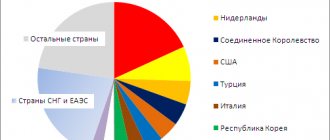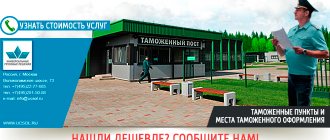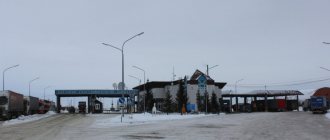News of Belarus. Even modern technologies cannot save you from many kilometers of traffic jams on the border with Poland, Latvia and Lithuania, reported the “24 Hours” News program on STV.
Failure of the neighboring party to fulfill its obligations, the closed “Forge”, and even the pre-holiday rush. The result is huge queues of heavy trucks. The picture has not changed for several weeks in a row.
In order to understand the situation, we invited Svetlana Dubovik, deputy head of the department of the main department for organizing customs control of the State Customs Committee of Belarus, to the studio.
At the moment, about 4,300 trucks are waiting to leave the Republic of Belarus
Ekaterina Zabenko, STV: For several weeks now, the situation at the border has remained difficult. Several thousand trucks are waiting in line. You probably have the latest figures and are constantly monitoring this situation. What is it like at the moment?
Svetlana Dubovik, deputy head of the department of the main department for organizing customs control of the State Customs Committee of Belarus: At the moment, about 4,300 cargo vehicles are waiting to leave the Republic of Belarus. Moreover, in the Polish direction this figure is 1,600 trucks, in the Lithuanian direction – 1,500, and in the Latvian direction – 1,200 freight vehicles.
Ekaterina Zabenko: Why did this situation arise in the first place?
Svetlana Dubovik: First of all, the increase in cargo traffic is associated with the end of the year and the onset of the Christmas and New Year holidays. This situation is predictable; as a rule, cargo traffic always increases in a given period of time.
Ekaterina Zabenko: So, in principle, you are always ready, plus or minus, for such turns of events?
Svetlana Dubovik: We are ready for the predicted increase in flow, appropriate measures are being taken. For example, the number of officials per shift who register vehicles is increasing. Therefore, yes, we are preparing for this situation.
State Customs Committee of the Russian Federation
—
The State Customs Committee of the Russian Federation (SCC of Russia), in accordance with the Customs Code of the Russian Federation and the approved Decree of the President of the Russian Federation of October 25, 1994, the Regulations on the State Customs Committee of Russia, is a federal executive body that directly manages customs affairs in the country.
As a federal executive body, the State Customs Committee of Russia carries out its activities in cooperation with other federal executive bodies, executive bodies of the constituent entities of the Russian Federation, as well as local government bodies. At the same time, in certain cases (for example, in cases of appeal to the State Customs Committee against decisions, actions or inactions of lower customs authorities), the State Customs Committee of Russia may enter into direct relations with officials of enterprises, institutions and organizations, regardless of their form of ownership, as well as with individuals.
Main tasks of the State Customs Committee of Russia
follow from the main directions of the customs policy of the Russian Federation and measures for its implementation and come down to:
- Ensuring, within its competence, the unity of economic security and the unity of the customs territory of the country.
- Protecting Russia's economic interests.
- Organization of application and improvement of means of customs regulation of economic activity, taking into account the priorities of the development of the Russian economy and the need to create favorable conditions for Russia's participation in world economic relations.
- Organization and improvement of customs affairs in Russia.
- Ensuring compliance with customs and other legislation, control over the implementation of which is entrusted to the Russian customs authorities.
- Ensuring Russia's participation in international cooperation on customs issues.
In accordance with the tasks of the State Customs Committee of Russia, it performs 64 functions, which can be divided into the following groups:
1. Organizational functions
. These include, in particular:
- Preparation of proposals for improving Russian customs policy, development of a legal, economic and organizational mechanism for its implementation and its implementation.
- Preparation of draft legal acts on customs affairs.
- In accordance with the legislation of Russia, the creation of regional customs departments and customs offices, customs laboratories, computer centers, material and technical bases, printing, construction and operational and other enterprises and organizations whose activities contribute to solving the problems of the customs authorities of Russia.
2. Fiscal functions
.
- In the process of carrying out its activities, the State Customs Committee of Russia makes, in accordance with the established procedure, proposals on the rates and mechanism for applying customs and other duties and taxes in relation to goods transported across the Russian customs border.
- Participates in the development of economic policy measures in relation to goods transported across the Russian customs border, including licensing, price regulation and other non-tariff measures, and implements them.
- Organizes the collection of customs duties and taxes and other customs payments in respect of goods transported across the Russian customs border.
- Ensures timely and complete payment of customs duties and taxes to the federal budget.
- Issues or ensures the issuance of licenses and qualification certificates, cancels or revokes them, ensures the maintenance of registers, approves the amounts of fees and other payments.
3. Functions of customs clearance and customs control
. These features include:
- Direct organization of customs clearance of goods and vehicles.
- Implementation of measures to improve and simplify it.
- Ensuring, both independently and in cooperation with other law enforcement agencies, control over compliance with the regime of the customs control zone, organizing a system for protecting customs infrastructure facilities.
- Organization of customs control and adoption of measures to improve and simplify it without compromising the effectiveness of such control.
- Participation in the development and organization of compliance with the permitting procedure for the movement of certain goods and vehicles across the customs border of Russia.
- Participation in the organization of export control, control over the export of strategic and other materials vital for Russia, as well as cultural values.
4. Currency control functions
. This group includes the following functions of the State Customs Committee of Russia:
- Organization of currency control (within competence).
- Performing the functions of a currency control authority.
5. Law enforcement functions
. These include:
- Ensuring the participation of Russian customs authorities in the implementation of measures to protect state security, protect public order, morality of the population, human life and health, animals and plants, the environment, and protect the interests of Russian consumers of imported goods.
- Organization of the fight against smuggling and other crimes in the field of customs.
- Ensuring that Russian customs authorities fulfill, in accordance with current legislation, the functions of investigative bodies for such crimes and bodies carrying out operational investigative activities.
- Organization of the fight against violations of customs rules and administrative offenses that encroach on the normal activities of Russian customs authorities.
- Ensuring that Russian customs authorities provide assistance in the fight against international terrorism and suppression of illegal interference at Russian airports in the activities of international civil aviation.
- Monitoring compliance by officials of the Russian customs authorities with the rule of law in the proceedings on cases of smuggling and other crimes in the field of customs, the implementation of operational-search activities, proceedings on cases of violation of customs rules and their consideration, proceedings on cases of administrative offenses encroaching on the normal activities of Russian customs authorities.
6. Functions for maintaining customs statistics
. The following functions of the State Customs Committee of Russia can be included in this group:
- Organization of maintaining customs statistics of foreign trade and special customs statistics of Russia.
- Submission to the President of the Russian Federation, the Government of the Russian Federation and other federal executive bodies of customs statistics data on issues within their jurisdiction, as well as to the constituent entities of the Russian Federation in the part directly related to them.
- Providing information to government bodies, enterprises, institutions, organizations and citizens through official publications of customs statistics of foreign trade in the forms accepted in international practice.
- Organization of maintaining the Commodity Nomenclature of Foreign Economic Activity, as well as preparation work for its development, modification and addition.
7. Functions aimed at protecting the rights and interests of citizens, enterprises, institutions and organizations when they carry out customs business
. This group of functions of the State Customs Committee includes:
- Creating conditions for the exercise of the rights of citizens, enterprises, institutions and organizations to appeal decisions (including regulations), actions and inactions of Russian customs authorities and their officials.
- Ensuring timely and complete consideration of complaints and appeals.
- Taking measures to eliminate the causes that give rise to infringement of the rights and interests of citizens, enterprises, institutions and organizations.
- Creation of a system for providing interested parties with information and providing them with consultations on customs issues in accordance with Russian legislation.
- Ensuring, within the scope of competence, the publication of the most important legal acts on customs matters.
- Carrying out awareness-raising work on the state and development of customs affairs in Russia using various media, including foreign ones.
- Creation of a system for making and operating preliminary decisions on the application of legislative acts on customs affairs in relation to a specific product or business transaction.
8. Functions for international cooperation in the field of customs
. Here we can highlight the following functions of the State Customs Committee:
- Development of draft international treaties of Russia on customs issues, conducting negotiations on their conclusion in accordance with the established procedure, submitting proposals for concluding such agreements.
- Participation in the development of drafts of other international treaties of Russia in terms of customs affairs.
- Submitting proposals to the Government of the Russian Federation on Russia's accession to international treaties on customs issues.
- Participation in the activities of international organizations dealing with customs issues.
- Organization of Russia's participation in the activities of the Customs Cooperation Council.
- Ensuring the fulfillment of Russia's international obligations regarding customs matters.
- Ensuring cooperation and interaction with customs and other competent authorities of foreign countries.
- Providing study and analysis of the customs policies of foreign states and the state of customs affairs in these states.
9. Functions for the implementation of personnel and social policies in the field of customs
. This group of functions of the State Customs Committee includes:
- Providing training, retraining and advanced training for customs officials, training specialists to work in customs laboratories and other subordinate institutions, enterprises and organizations.
- Approval of educational programs for subordinate educational institutions.
- Organization of a training system for specialists in the field of customs for enterprises, institutions and organizations.
- Development of the material, technical and social base of customs authorities, customs laboratories and other subordinate enterprises, institutions and organizations.
- Promoting the implementation of measures of legal and social protection of customs officials, employees of customs laboratories and other subordinate enterprises, institutions and organizations.
From the above functions of the State Customs Committee of Russia it is clear that these functions are mainly of an organizational and supervisory nature (organization, support, control). This once again emphasizes that the State Customs Committee is the functional center of the customs authorities system, heads it and directs the activities of all parts of the system, contributing to the implementation of the tasks and functions facing the customs authorities of the country as a whole.
The State Customs Committee performs the functions assigned to it directly, as well as through regional customs departments, customs houses and customs posts, customs laboratories, educational institutions subordinate to the State Customs Committee of Russia, research institutions, computer centers and other enterprises and organizations.
In the process of carrying out the functions assigned to it, the State Customs Committee of Russia, in cases provided for by the Customs Code of the Russian Federation and other legislative acts, is vested with the right to issue regulatory legal acts on customs affairs, mandatory for execution by all customs authorities of the Russian Federation, enterprises, institutions and organizations, regardless of their form of ownership. as well as officials and citizens.
The functions and tasks assigned to the State Customs Committee of Russia determine its internal organizational structure, consisting of the management of the State Customs Committee, which, in turn, consists of the Chairman of the State Customs Committee, his deputies and the board of the State Customs Committee, as well as the State Customs Committee apparatus, which includes departments and departments, created in accordance with the functions and main areas of activity of the State Customs Committee of Russia.
The State Customs Committee of Russia is a body whose leadership is carried out on the principles of a combination of collegiality and unity of command.
The State Customs Committee of Russia is headed by a chairman who exercises general management of the system of customs authorities. The Chairman of the State Customs Committee of Russia is appointed and dismissed by the President of the Russian Federation and has the rank of federal minister. The Chairman of the State Customs Committee has deputies, appointed and dismissed by the Government of the Russian Federation on the proposal of the Chairman of the State Customs Committee of Russia. Responsibilities among the deputies are distributed by the Chairman of the State Customs Committee.
The most important issues related to the management of customs affairs are resolved at meetings of the State Customs Committee Board formed within the State Customs Committee of Russia, headed by the Chairman of the State Customs Committee and consisting of his deputies and a number of other senior officials of the system of customs authorities and customs service organizations. The decisions of the board are implemented by orders of the Chairman of the State Customs Committee of Russia and are binding on all lower levels of the customs system.
The main volume of operational work to manage the activities of the customs authorities system falls on the departments and departments of the State Customs Committee of Russia.
Directorates and departments of the State Customs Committee, formed on a functional principle, ensure the preparation of draft management decisions on the implementation of customs affairs in the country, as well as management and control over the practical implementation of these decisions by territorial bodies and organizations of the customs system
The structure of the apparatus of the State Customs Committee of Russia is represented by the following main departments: the department of tariff and non-tariff regulation, the department of federal customs revenues, the department of organization of customs control, the legal department, the department of customs statistics and analysis, the security department, the department of external relations, the department of exchange control.
In addition to the main ones aimed at the direct management of customs affairs in the country, the structure of the State Customs Committee of Russia has a number of auxiliary (supporting) departments and departments, the purpose of which is to ensure normal conditions for the functioning of the customs authorities system, the development of customs infrastructure, and the creation of social and living conditions to ensure compliance officials and other employees of the system of customs authorities and customs service organizations of their official duties. These, for example, include: financial management, logistics department, social development department, main personnel department, media and public relations department, and a number of others.
As mentioned earlier, the process of modernizing the customs service is currently underway in accordance with the needs of adapting customs affairs in Russia to international standards. This process also includes the restructuring of the central apparatus of the State Customs Committee of Russia. A number of departments and departments are being transformed in accordance with the realities of today. In addition, new structural units are being created.
The State Customs Committee of Russia is a legal entity with all the characteristics inherent in the status of a legal entity. The activities of the State Customs Committee of Russia and the customs authorities subordinate to it are financed from the federal budget allocated for the maintenance of federal executive authorities, as well as other sources provided for by the legislation of the Russian Federation.
—
Back to section
At the Kamenny Log checkpoint, the standards are met by the Lithuanian side only by 50%
Ekaterina Zabenko: This year it has become more complicated, probably because our colleagues from neighboring countries are not working very correctly.
Svetlana Dubovik: Monitoring of this situation recently shows that our agreements are not being implemented by neighboring countries. For example, at the Kamenny Log checkpoint (this is one of the largest checkpoints in the Lithuanian direction), the Lithuanian side only fulfills the norms by about 50%. We are holding consultations with neighboring countries. In particular, consultations were held through the Ministry of Foreign Affairs. Some proposals are being made. The Belarusian side initiated the opening of checkpoints in the Lithuanian direction, where traffic is currently suspended. In order to reduce the load at checkpoints, where the situation is now extremely negative.
The situation with queues negatively affects carriers, including foreign ones
Ekaterina Zabenko: Svetlana Sergeevna, what negative consequences do you see that this situation with queues at the border brings?
Svetlana Dubovik: First of all, the economy suffers, the economy of the countries where cargo must be delivered, carriers of the countries that are involved in moving cargo. I believe that, first of all, the situation with queues negatively affects carriers, including foreign ones.
Ekaterina Zabenko: Svetlana Sergeevna, approximately how many cars do our customs services let through at least per day?
Svetlana Dubovik: Currently, there are more than 6,000 freight transport vehicles, 6,600 trucks on average.
Ekaterina Zabenko: Quite an impressive figure.
Svetlana Dubovik: An impressive figure, taking into account the fact that not all checkpoints on the border are functioning and the load has fallen on certain checkpoints.
Vehicles wait in line for up to 6-7 days to enter the checkpoint
Ekaterina Zabenko: In general, how much plus or minus does a truck driver or truck driver have to wait in line?
Svetlana Dubovik: Everything, of course, depends on the level of the queue, on the direction. This takes up to 6-7 days, when vehicles stand in line to enter the checkpoint. There were such cases. On average, getting to the checkpoint to undergo control procedures, this time for a truck is about 4-6 hours in the Lithuanian direction, somewhere around 4-5 hours in the Polish direction and up to 3 hours in the Latvian direction. This again takes into account the intensity of reception of vehicles by the neighboring side.
Ekaterina Zabenko: Svetlana Sergeevna, in your opinion, what needs to be done to solve this problem?
Svetlana Dubovik: To minimize queues, in my opinion, it is necessary to evenly distribute flows along the border. That is, for all checkpoints to function in the mode for which they are intended. That is, open checkpoints for the flow of goods. In connection with the New Year and Christmas holidays, shifts will be increased; there is the possibility of using some of the latest technologies for performing customs operations. Therefore, everything is possible.
VIRTUAL CUSTOMS CUSTOMS AND LOGISTICS PORTAL
We hereby inform you that in pursuance of Decree of the President of the Russian Federation dated 03/09/2004 314 On the system and structure of federal executive bodies and Decree of the Government of the Russian Federation dated 08/21/2004 429 On the Federal Customs Service, the State Customs Committee of Russia was transformed into the Federal Customs Service (FCS of Russia). In accordance with the Federal Law on State Registration of Legal Entities, on September 9, 2004, an entry was made into the Unified State Register of Legal Entities on the creation of a legal entity - the Federal Customs Service of Russia through reorganization in the form of transformation. Based on Decree of the Government of the Russian Federation of August 21, 2004 429, the organizational structure and staff of the central office of the Federal Customs Service of Russia were approved from September 10, 2004. The structure of the central apparatus of the Federal Customs Service of Russia includes 8 main departments and 11 departments for the main areas of activity of the Service (appendix). The functions of the divisions of the State Customs Committee of Russia have been transferred to the corresponding divisions of the Federal Customs Service of Russia, and the functions of the reduced directorates are distributed as follows: Medical Directorate - Main Directorate of Logistics Support; Directorate for Interaction with Legislative and Executive Authorities and the Directorate for Monitoring Compliance with Legislation in Customs Affairs - Legal Department; Office for Customs Union Affairs, Office of International Customs Cooperation and Office for Interaction with Business Community - Office of Customs Cooperation. The unit for interaction with the media (Press Service) is included in the structure of the Main Organizational and Inspection Directorate; divisions for the protection of state secrets and special documentary communications and the mobilization department are included in the structure of the Administration. The Main Directorate of Special Equipment and Automation of Customs Technologies was renamed the Main Directorate of Information Technologies, and the Main 1 Directorate of Tariff and Non-Tariff Regulation was renamed the Main Directorate of Commodity Nomenclature and Trade Restrictions. We ask you to take into account the provisions of this letter when organizing the activities of customs authorities.
Application: for 1 l. in 1 copy.
Head of the Main Organizational Inspectorate Directorate, Lieutenant General of the Customs Service N.A. Sapyanik
Appendix to the letter of the Federal Customs Service of Russia dated September 14, 2004 02-128/413
List of divisions of the central apparatus of the Federal Customs Service of Russia
| p/p | Full name | abbreviated name |
| 1. | Main Organizational Inspection Directorate (office of the head of the Federal Customs Service of Russia) | GorgIU |
| 2. | Main Financial and Economic Department | SFEU |
| 3. | Main Directorate of Customs Control Organization | GUOTK |
| 4. | Main Directorate of Federal Customs Revenues | GUFTD |
| 5. | Main Directorate of Commodity Nomenclature and Trade Restrictions | GUTNiTO |
| 6. | Main Directorate for Combating Smuggling | GUBK |
| 7. | Main Directorate of Logistics Support | GUTO |
| 8. | General Directorate of Information Technologies | GUIT |
| 9. | Personnel Department | UK |
| 10. | Department of Security Organization | UOSO |
| 11. | Case management | UD |
| 12. | Department of Internal Security | CSS |
| 13. | Department of Customs Statistics and Analysis | UTSA |
| 14. | Office of Exchange Control | UVK |
| 15. | Legal Department | PU |
| 16. | Customs Cooperation Department | TCB |
| 17. | Customs Inspection Department | UTI |
| 18. | Department of Customs Investigations and Inquiry | UTRD |
| 19. | Control and Audit Department | KRU |









